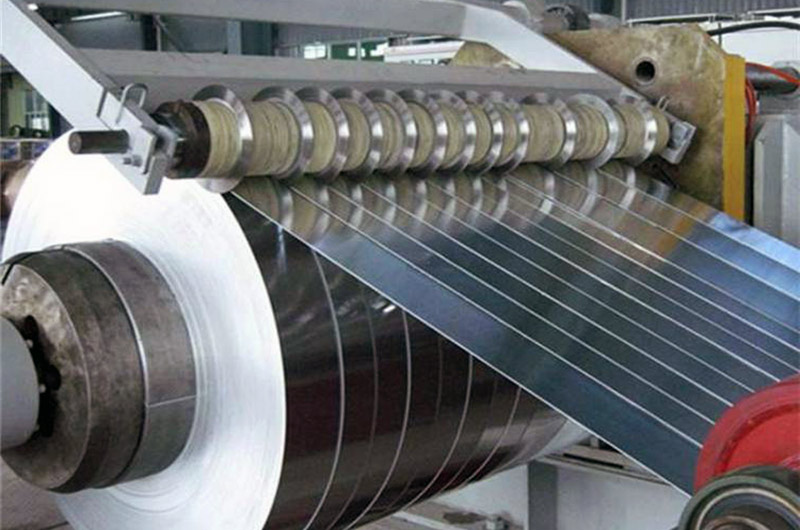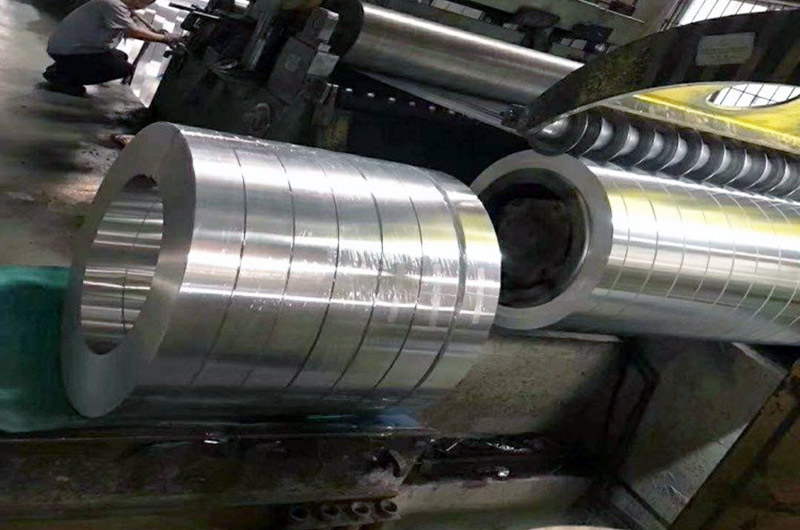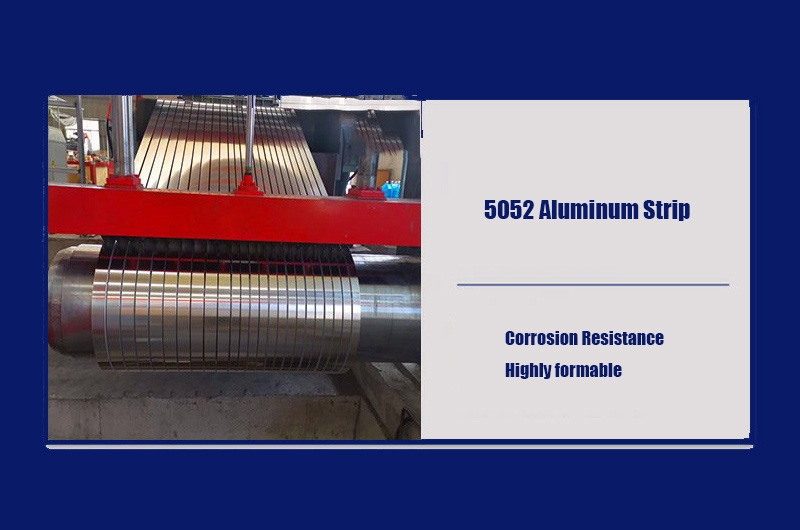- 5052 Aluminum Strip Basic Information
- Customer Concerns of 5052 Aluminum Strip
- Advantages and Disadvantages
- 5052 Aluminum Strip Chemical Composition
- 5052 Aluminum Strip Mechanical Properties
- 5052 Aluminum Strip Physical Properties
- 5052 Aluminum Strip Typical Temper
- 5052 Aluminum Strip Surface Finish and Applications
- 5052 Aluminum Strip Common Applications
- 5052 Aluminum Strip Problems and Solutions
- When to Choose 5052 Aluminum Strip
- Hot Topics about 5052 Aluminum Strip
5052 Aluminum Strip Basic Information
5052 Aluminum Strip Composition
5052 aluminum alloy consists of 97.25% aluminum, 2.5% magnesium, 0.25% chromium, and other trace elements.
5052 Aluminum Strip Properties
It offers excellent corrosion resistance, high fatigue strength, good weldability, and moderate to high strength.
5052 Aluminum Strip Form
Typically available in the form of strips, sheets, and plates.

Customer Concerns of 5052 Aluminum Strip
Quality Assurance
Customers often express concerns about the alloy's purity, consistency, and adherence to industry standards.
Haomei Aluminum ensures certification and compliance with recognized quality standards.
Here are some potential concerns and ways to address them:
1. Chemical Composition and Alloy Integrity
Ensure that the 5052 aluminum strip meets industry standards for its chemical composition and alloy integrity.
Provide certification or testing documentation that verifies the alloy composition and adherence to relevant standards.
2. Surface Finish and Appearance
Address concerns related to the surface finish by providing details about the manufacturing process and quality control measures in place.
Share information about any protective coatings or treatments applied to enhance the appearance and durability of the strip.
3. Mechanical Properties
Clearly communicate the mechanical properties of the 5052 aluminum strip, such as tensile strength, yield strength, and elongation.
Offer testing or quality assurance data to demonstrate that the strip meets or exceeds required specifications.
4. Corrosion Resistance
Emphasize the corrosion resistance properties of 5052 aluminum and provide information about any additional treatments or coatings applied to enhance its resistance to corrosion.
Share data from corrosion testing or real-world applications that showcase the material's performance.
5. Compliance with Industry Standards
Highlight the compliance of the 5052 aluminum strip with relevant industry standards and specifications (e.g., ASTM, AMS).
Provide documentation or certifications that demonstrate adherence to these standards.
6. Quality Control Processes
Describe the quality control processes implemented during manufacturing, including inspections, testing, and certifications.
Assure customers that the company is committed to delivering consistently high-quality products.
7. Customer Testimonials and References
Share positive feedback and testimonials from other customers who have used the 5052 aluminum strip for similar applications.
Provide references or case studies that demonstrate successful use of the product in various industries.

Advantages and Disadvantages
Advantages of 5052 Aluminum Strip
Corrosion Resistance
5052 aluminum has excellent corrosion resistance, making it suitable for use in marine environments and other applications where exposure to moisture or harsh weather conditions is a concern.
Formability
This alloy is highly formable, allowing it to be easily shaped into different profiles. It can be rolled, stamped, drawn, or bent without losing its properties.
Weldability
5052 aluminum has good weldability, making it easy to join using various welding techniques. This property is essential in manufacturing processes where components need to be fused together.
High Fatigue Strength
The alloy exhibits good fatigue strength, which is beneficial in applications where the material undergoes cyclic loading, such as in structural components.
Surface Finish
5052 aluminum can achieve a smooth and attractive surface finish, making it suitable for applications where aesthetics are important.
Disadvantages of 5052 Aluminum Strip
Not Heat-Treatable
One of the drawbacks is that 5052 aluminum is not heat-treatable. This means that its mechanical properties cannot be significantly altered through heat treatment processes.
Lower Strength Compared to Some Alloys
While it has good strength for many applications, there are alloys with higher strength characteristics. Depending on the specific requirements of an application, a higher-strength alloy might be preferred.
May be Susceptible to Stress Corrosion Cracking
In certain conditions, 5052 aluminum may be susceptible to stress corrosion cracking. It is important to consider the environment and potential stresses the material will face in the application.
Cost
Depending on market conditions and availability, the cost of 5052 aluminum strip may be a consideration for some customers.

5052 Aluminum Strip Chemical Composition
- Aluminum (Al): 97.25%
- Magnesium (Mg): 2.5%
- Chromium (Cr): 0.25%
- Others (Cu, Mn, Fe, Si): Trace amounts
5052 Aluminum Strip Mechanical Properties
- Tensile Strength: 33, 000 psi
- Yield Strength: 28, 000 psi
- Elongation: 12%
- Hardness (Brinell): 60 HB
5052 Aluminum Strip Physical Properties
- Density: 0.0975 lb/in³
- Melting Point: 1, 220°F
- Thermal Conductivity: 138 W/(m·K)
5052 Aluminum Strip Typical Temper
H32, H34, H36, H38: Strain-hardened and stabilized.
- 5052 H32 Aluminum Strip
- 5052 H34 Aluminum Strip
- 5052 H36 Aluminum Strip
- 5052 H38 Aluminum Strip
Different Temper and Mechanical Properties:
The designations "5052 H32, " "5052 H34, " "5052 H36, " and "5052 H38" refer to different temper conditions of 5052 aluminum alloy. These conditions indicate the specific thermal treatments and mechanical properties of the aluminum.
Here's a breakdown of each:
5052 H32 Aluminum Strip
H32 Temper: This indicates that the aluminum has been strain-hardened and stabilized by low-temperature heating. It is then artificially aged to a stable condition. The H32 temper provides a good balance of strength and formability.
5052 H34 Aluminum Strip
H34 Temper: Similar to H32, it has undergone strain-hardening and has been stabilized. The H34 temper is achieved by controlling the amount of strain and the rate of cooling during the aging process. This temper provides increased strength compared to H32.
5052 H36 Aluminum Strip
H36 Temper: This temper is achieved by a slightly different process than H32 and H34. It involves a greater amount of strain hardening and a different stabilization treatment. The H36 temper offers higher strength compared to H34.
5052 H38 Aluminum Strip
H38 Temper: This is a high-strength temper achieved by a combination of strain hardening and aging. The H38 temper provides the highest strength among the mentioned temper conditions.
The choice of temper depends on the desired balance of mechanical properties for a particular application. For example, H32 and H34 are commonly used in applications where formability is important, while H36 and H38 are chosen when higher strength is a priority.
Aluminum alloy 5052 is known for its excellent corrosion resistance, good workability, and high fatigue strength. It is commonly used in marine applications, as well as in the construction of aircraft and vehicles. The specific temper chosen will depend on the requirements of the specific application.
5052 Aluminum Strip Surface Finish and Applications
- Mill Finish: Commonly used for general applications.
- Anodized: Enhances corrosion resistance; used in marine environments.
- Painted/Coated: Provides additional protection; used in architectural applications.
5052 Aluminum Strip Common Applications
- Marine Components: Boat hulls, decks, and components due to corrosion resistance.
- Architectural Panels: Anodized or coated strips for building facades.
- Automotive Parts: Body panels, fuel tanks, and components.
- Electrical Enclosures: Due to its electrical conductivity.
5052 Aluminum Strip Problems and Solutions
- Corrosion: Apply protective coatings or use anodized strips.
- Welding Issues: Proper welding techniques and filler materials.
- Formability Concerns: Work with suppliers offering strips with proper temper.
When to Choose 5052 Aluminum Strip
- Corrosive Environments: Marine and coastal applications.
- Formability Required: For applications requiring bending and shaping.
- Moderate Strength Applications: Where 5052's strength is sufficient.
Hot Topics about 5052 Aluminum Strip
- Recycling: Growing interest in the sustainability of aluminum products.
- Innovations in Surface Treatments: Advances in coatings for enhanced performance.
- Supply Chain Challenges: Global factors affecting availability and pricing.
In conclusion, 5052 aluminum strip offers a balanced combination of properties suitable for various applications, with considerations for surface finish, temper, and potential challenges during use.
